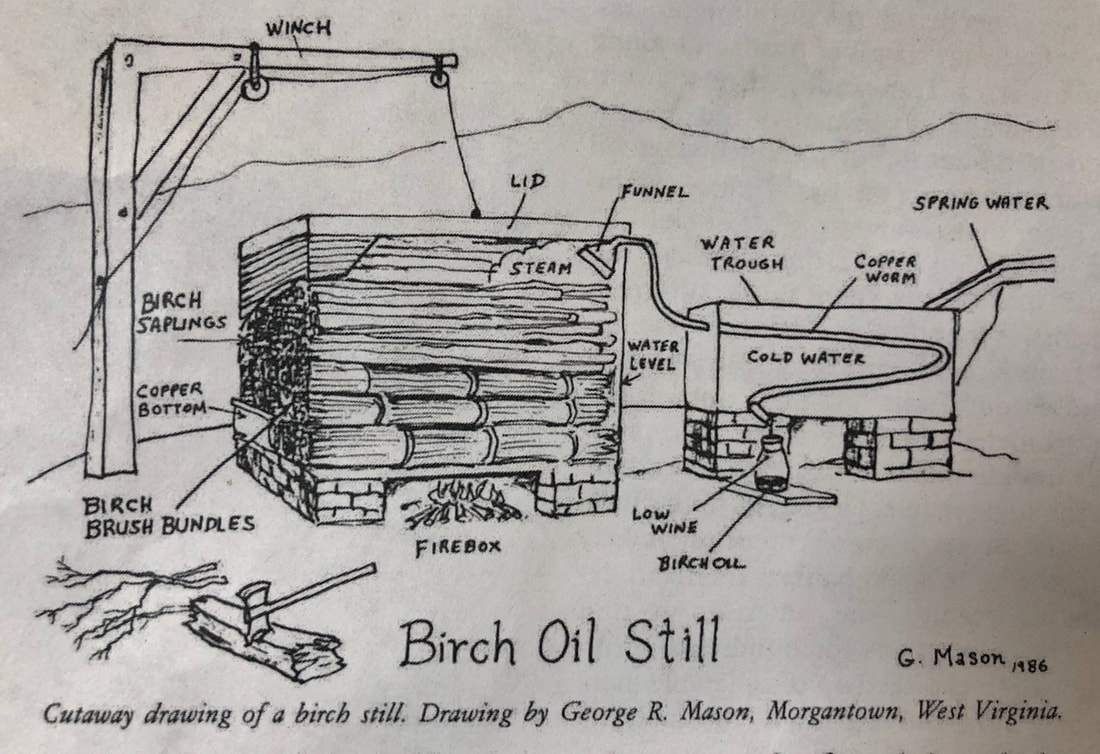CONSERVATION CORNER
A weekly blog for all things conservation
 by Jim Hyland "This is reprinted from Forest Fridays, a DCNR newsletter publication. Jim makes some excellent points about how we have become removed from the “real” world- where our food, shelter, clothing, and many more necessities come from. We need to regain that perspective.. For those as old as me, remember cutting off birch branches and chewing on the ends of them? They taste really good. For those young whipper-snappers who have never experienced it, try it. I haven’t had Birch Beer in a long time. It seems to be a lot harder to find these days, but it tastes really good."- Kevin Brown In America’s ready-made, store-bought, and disposable society, only the oldest folks remember a time when people directly depended on the land, not only for food; but for the building materials, tools, and remedies necessary to live on and maintain the family homestead. Perhaps as essential as learning to read, write, and use proper manners, children needed to learn how to utilize the bounty of the land and how to transform earthly resources into products useful to everyday life.
Of those resources, trees are one of nature’s most generous and useful gifts. In the “olden days”, people were much more familiar with the different species of trees that grew around them, as they depended on the various species’ fruits or wood properties. One particularly beneficial tree is the much bemoaned “black birch” (aka “sweet birch”). In Tioga State Forest a few years ago, with the help of a local old-timer, the foresters who came before me saw an opportunity to relearn and revive the mostly forgotten method of birch stilling, or extracting that most fragrant and essential oil that is both a potent medicine and tasty flavoring, depending on the concentrations used. Birch oil’s chemical name is methyl salicylate, and if that sounds like medicine, it is! Salicylic acid is the active ingredient in aspirin, and methyl salicylate has the same pain killing properties, but with a much more complete resume’ that includes flavorings for candy and soda, soothing skin liniments (think Ben Gay™ and Icy Hot™), toothache remedies, and more. In Tioga County circa 1900, thousands of acres of pioneering young birch stands grew out of the rampant cutting of the original and second-growth forests, so pioneering young families took advantage. The work of producing birch oil was typically a winter gig for rural folks, especially large landowners. The process is similar to maple syrup production today, but the oil was much more valuable and is said to have brought about $50.00 per gallon. Simply, the process consisted of building a beefy 10 x 10-foot wooden box with a copper liner in the bottom and a heavy, tight-fitting lid. The box was stuffed with birch saplings and small logs, and about a of foot of water was poured inside and brought to a near boil by a fire under the box. Steam extracted the oil from the wood, and together they were drawn out of the box by a funnel near the top. The funnel was connected to a long copper tube, known as the “coil”, or “worm”, and that tube was immersed and spiraled in a wooden trough of cold running water diverted from a nearby creek (essential that it be cold). Of course, the hot steam in the cold copper tube condensed back into water and was collected in a clear vessel. Since oil and water don’t mix, they are easily separated. A properly built still and two busy workers were able to produce about three pints of oil in 24 hours. The illustration below makes it all clear! If you are interested in seeing the process in person, Tioga staff and other volunteers fire up the recreated birch still several times per year at the Pennsylvania Lumber Museum in Galeton. The Bradford County Conservation District is committed to helping people manage resources wisely. You can visit the Bradford County Conservation District at 200 Lake Rd in Wysox across from the Wysox Fire Hall. Contact us at (570) 485-3144 or visit our web page at www.bccdpa.com.
0 Comments
Leave a Reply. |
AuthorsVarious staff at the Bradford County Conservation District Archives
July 2024
Categories
All
|
|
Bradford County Conservation District
Stoll Natural Resource Center 200 Lake Road, Suite E | Towanda PA 18848 Phone: (570)-485-3144 |
